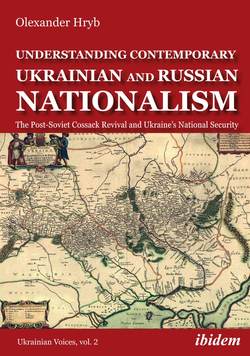Читать книгу Understanding Contemporary Ukrainian and Russian Nationalism - Olexander Hryb - Страница 19
Summary
ОглавлениеWe can draw at least two synthetic conclusions from the discussion so far. First, authors generally agree that changes of national consciousness should be considered as dynamic processes. However, “modernists” recognize this only indirectly as, for instance, Gellner does when writing that changes of symbols within national consciousness are national processes (Gellner 1983, 58). Second, the “primordialist” tradition, as well as Soviet Ethnography and contemporary Russian and Ukrainian scholars, recognize the substantially important role of ethnic consciousness for the creation of national consciousness and of the nation as a whole. “Modernists” insist that ethnic consciousness has a random role, if any, for national phenomena and stress “objective” social and economic determinants.
From the analysis above we can sum up the similarities and differences of the main Western and Eastern European approaches to the concepts of nation, ethnic communities, national and ethnic consciousness. Although, on the one hand, synthesis is possible, it is important to stress that the common concerns expressed by different traditions do not imply a similarity of conceptual approach: often different authors reached similar conclusions as a result of different methods and means of enquiry.
Although “primordialists,” Soviet and post-Soviet scholars in Russia and Ukraine generally agree on the ethnic origins of nations and the crucial role of consciousness in their genesis, in fact their primary assumptions were substantially different. “Primordialists” developed their conclusions as a result of the assumption that consciousness is an immanent and inseparable condition of the appearance of nations, which was illustrated by the studies of world ethnic history and concrete historical and contemporary identities. Within Soviet and post-Soviet traditions, such an assumption would be unacceptable because of the materialistic paradigm in which they developed. Nevertheless, historical analysis of concrete national identities led both schools of thought to agreement, in principle, as to the role and functions of ethnic and national consciousness for the existence of national phenomena.
At the same time, although “modernists” and Soviet/post-Soviet ethno-sociologists based their theories on historical materialism, they disagree on several important issues. The former argue for the importance and functionally occasional role of national/ethnic consciousness in the appearance of national-social units during the foundation of industrialism. They claim that national consciousness is a consequence of nationalism and therefore originally initiated by the new socio-economic conditions which created the concrete boundaries of nations. The real causes of the nations’ genesis, then, lie in the development of the productive forces. In this scheme, ethnic consciousness is not necessary, so “modernists” logically conclude that substantially it is unimportant. The climax of such logic is the recognition of the fact that the appearance of “national” units itself was accidental in the development of human society during the industrial epoch (Gellner 1994).
The materialistic concept of Soviet Ethnography also states that the creation of nations is strongly bound up with the socio-economic development of human society at the stage of industrialism or “capitalism.” Consciousness here is a consequence of social reality. However, unlike “modernists,” Soviet scholars believed that national consciousness is a reflection of its nation. In this case, national consciousness is not a “creator” of the boundaries of national unity (as Gellner claimed), and is not an immanent condition of a nation’s appearance (as Smith argued), but is an internal attribute of the nation that serves an important function. It is striking that the description of these functions is quite similar within all concepts. What is difficult to harmonize is the correspondence between national and ethnic consciousness. “Primordialists,” Soviet and most of post-Soviet ethno-sociologists are together in their sense that national consciousness inherited, naturally and evolutionarily, ethnic consciousness, whereas “modernists” insist on the accidental relationship between ethnic and national consciousness.
Scholars list the following elements of national consciousness that are common to all traditions: awareness of a common historical territory (“homeland”); self-given name (‘ethnonym’); a common culture in its private and civic expressions; a common state order; and a socio-economic organization. Most of these categories reflect rational elements that are relatively easy to study using sociological research tools. However, it is the emotional elements of consciousness able to reflect the relationship between ethnic and national consciousness that are the least explored. And it is this relationship that evokes the most disagreements among scholars of different schools.
